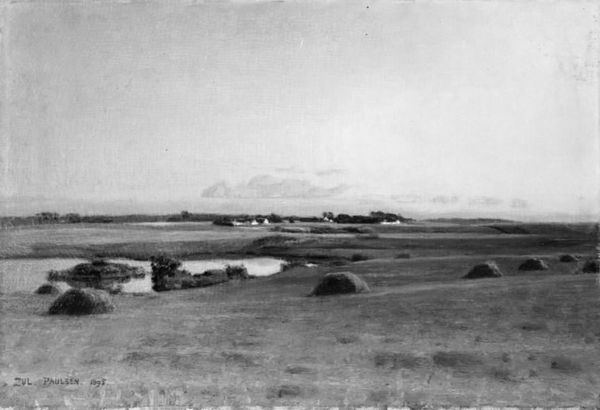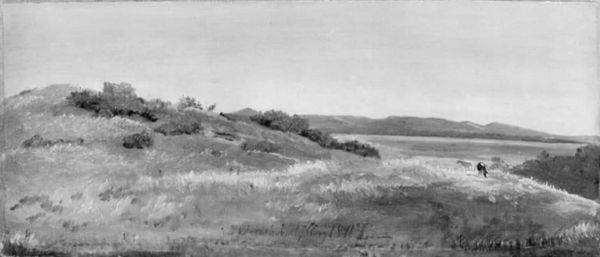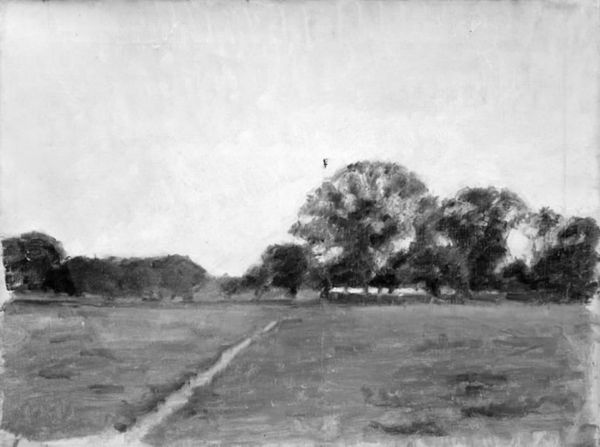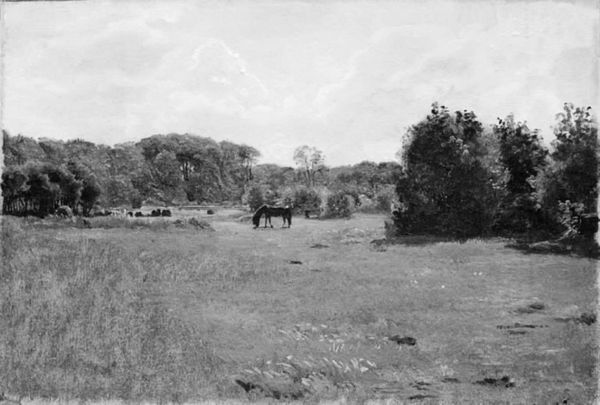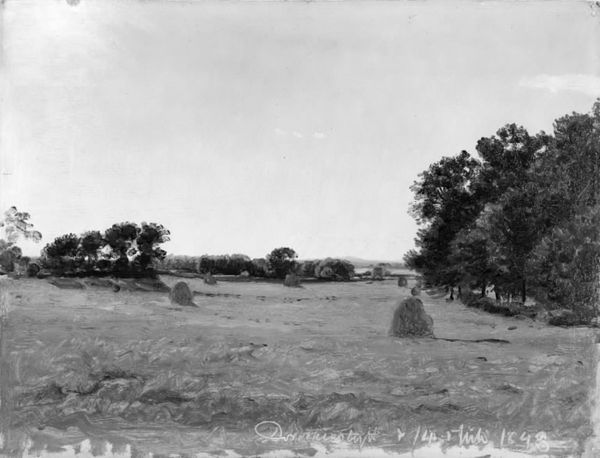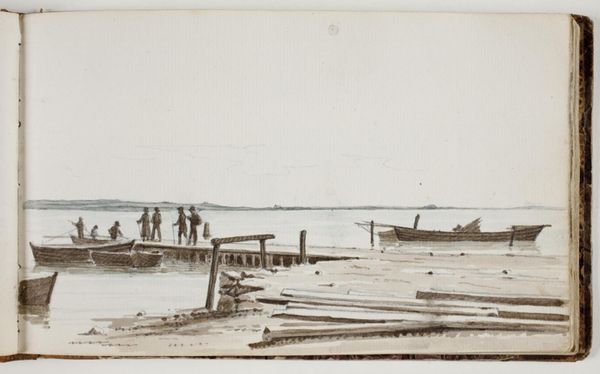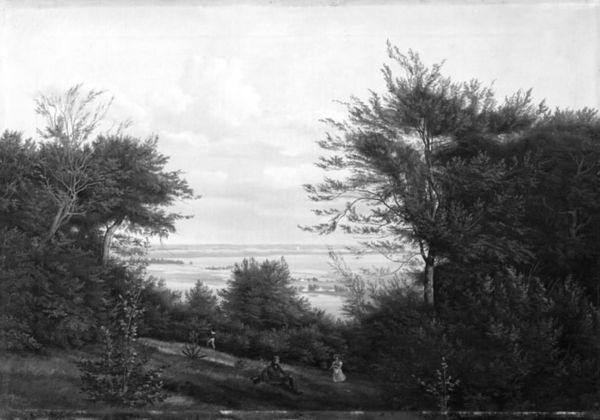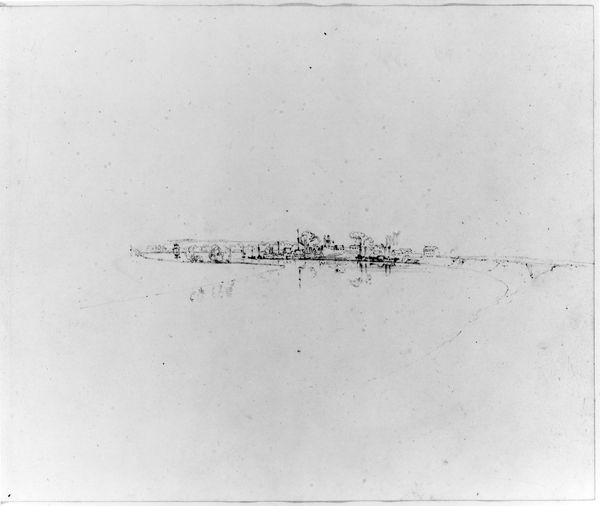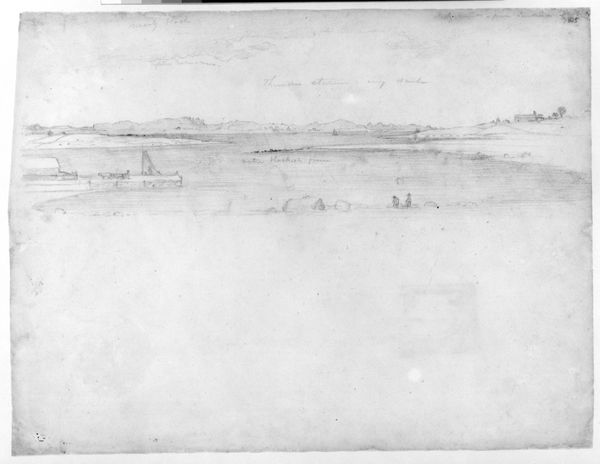
painting, plein-air
#
painting
#
plein-air
#
landscape
#
academic-art
#
monochrome
#
realism
#
monochrome
Copyright: Public domain
Curator: This is "Sailboats Racing' study of the Delaware River" by Thomas Eakins. It's an intriguing example of his plein-air work. Editor: Striking. The stark, almost monochrome palette gives it a somber feel. There's an immense calmness here, despite the subject of racing sailboats. It's mostly the scale, isn't it? Curator: Indeed, though it lacks precise dating, this work embodies Eakins' dedication to capturing realistic scenes from everyday life. The composition is built around horizontal lines that visually echo this stillness. Note how the placement of the boats creates that tension of speed and calm. Editor: Absolutely. Sailboats were a potent symbol of leisure and recreation in the late 19th century. Considering Eakins' focus on realism, one has to wonder, what aspects of the races attracted his eye? Curator: We know Eakins spent much time by the Delaware River, and it played a very prominent role in shaping the artist's view. The symbolism might extend to notions of freedom and movement associated with river voyages and races. Editor: I wonder about this stylistic choice to subdue colors. It evokes 19th-century photography, perhaps pointing toward objectivity. Was this the ethos he projected into depicting social reality around him? Curator: A good point. As a piece executed en plein air, it speaks to Eakins' wish to observe the scene and relay that observation. By minimizing the color, it appears, he aimed to convey objectivity but at the same time he imbued a heavy feeling into this vision of motion on the Delaware River. It's also true he embraced new mediums like photography, which would contribute to seeing monochrome or subdued color, as less stylized and more objective. Editor: Thank you, these insights into Eakins’ engagement with contemporary themes provide invaluable context for viewing this painting. It is fascinating how a painting dominated by quiet tones, makes one consider the visual cues that society absorbs from the available and upcoming technologies. Curator: It is precisely this understated, insightful observation that keeps Eakins relevant today.
Comments
No comments
Be the first to comment and join the conversation on the ultimate creative platform.
